Volkswagen’s keyless entry system, KESSY, is cool stuff, but still needs a little TLC now and then
Most of us are used to enjoying keyless entry, no matter what we drive or service, but today’s Volkswagen keyless entry system, known affectionately as KESSY, is quite something. Walking up to the car with the key fob in your pocket or purse somewhere in your possession, all you have to do to unlock the car is place your hand in the door handle and, voilà , you’re in.
Want access to the trunk or tailgate? You can just place your hand into the trunk handle area and, again, the trunk or tailgate pops open. In Touareg and Passat vehicles, if you’re toting a large or heavy object and you have the key fob in your pocket, you only have to sweep your foot in a kick at the trunk, and, yet again, up pops the trunk lid. And when leaving the vehicle, just push the lock button on the door handle and the car is locked.
Neat. This usually works flawlessly day in and day out for thousands of miles and probably years.
Then, all of a sudden, things can go awry, and unlocking the Jetta, Beetle, Golf, or Passat without inserting a physical key just got complicated – the key fob is not working and does nothing, one door lock is not working, the windows work off the passenger side switch, but not the driver’s side, or vice versa, the door lock works in only one direction, locks work from the switch, but not the remote, the interior light does not come on when the door is opened, the alarm goes off when the door is opened, and/or many other often quite strange factors appear.
Time to take a look.
Volkswagen’s keyless entry system consists of four basic components:
- the key fob and sending unit
- individual door control modules and door lock sensor
- mechanical door locking/unlocking mechanisms
- the central Convenience (or, Comfort) Control Module (CCM), or upgraded unit
Check the fuses!
If the system appears to have gone mad, the solution to these problems can be complicated – or in some cases, very simple. Before going into major diagnosis and troubleshooting mode, do one or both of two things:
- Check the fuses, especially Fuse 14. This is for interior lights and the internal locking system. If it’s blown, it will often disable most or all of the keyless entry system. If you find it blown, replace it and see if everything is miraculously fixed. Other relevant fuses are:
- Fuse 5: Comfort system, cruise control, Climatronic, AC, heated seat control module, and control unit for multifunction steering wheel
- Fuse 6: Central locking system
- Fuse 38: Central locking system, luggage compartment light, remote fuel tank door, unlock rear lid or tailgate
- Disconnect both battery cables and touch the positive and negative cables together for a few seconds, discharging any remaining current in the system, then reconnect the cables. This sometimes clears malfunctions and just like turning your computer off and restarting it, can return the system to normal.
It may seem obvious, but if the key fob is not working, there is no keyless entry. If the fob appears lifeless, in most cases the simple fix is to replace the key fob battery, and that may cure the problem right away. The battery is located under a cover at the chrome clasp of the remote key fob.
Touareg and CC four door Comfort Coupe vehicles don’t use ordinary keys as such, but have three buttons in the fob to unlock and lock the vehicle, and open the rear lid. If the VW emblem is pressed along with an additional release under the top of the key, an emergency key pops out of the fob, which is meant to be inserted into the physical door lock under a cover on the driver door handle, and unlocks or locks the door if the remote is not working.
If the fob has not been working and replacing the battery has no effect on KESSY, proceed to the rest of the system.
When the system is working properly, the fob – whether by pushing the button signal or simply by being on the person of an approaching driver – sends a radio pulse signal to the proximity sensor in the lock cylinder when the key fob is within 1.5 meters of the door. This signal “engages†the individual door computer, which is attached to the mechanical door locking/unlocking mechanism.
Door CCM activates unlocking mechanism
When the driver touches the door handle, the door CCM (J386) receives the message from the door lock sensor and relays it to the central control module (J393) located under the carpet near driver’s door on older vehicles, behind the dash near the steering wheel, or behind the glove box in later vehicles, or to the Electrical System Control Module (J519) in late model vehicles. This unit incorporates most functions of the former CCM (J393) and is sometimes referred to as a Body Control Module, or Access/Start Authorization Control Module (J518) in late model Phaetons.
The central control module signals the door’s CCM microswitch to “tell†the door module to turn a lever to the mechanical door unlocking/locking mechanism and unlock the door, allowing the driver to open and enter the vehicle. All of this happens with the driver doing nothing but approaching the vehicle and placing his or her hand in the door handle, as long as he or she has the key fob in a pocket
or purse.
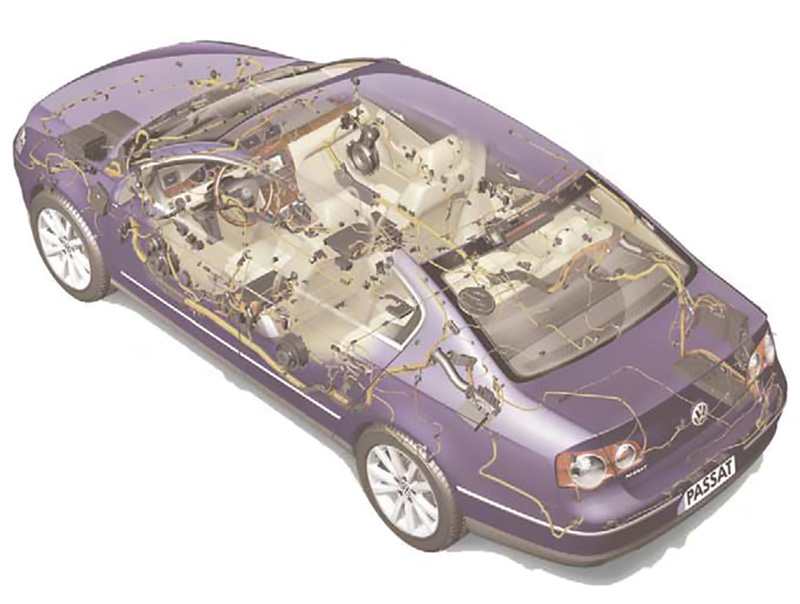
Passat expands range of sensors
Late model Passat vehicles utilize a battery of sensors and slave modules throughout the vehicle and a more comprehensive central control module handling more functions, called the Access/Start Authorization Control Module (J518), which works with the traditional J393 CCM to unlock and
lock doors.
Volkswagen vehicles are equipped with an alarm that sounds if unauthorized entry is attempted, and should keep silent if intended entry is correct, and an immobilizer that freezes vehicle start functions if incorrect entry appears to be underway. The immobilizer was normally controlled by the vehicle ECM, but in late models is included in the central Electrical System Control Module (J519) or Access/Start Authorization Control Module (J518) in late model Passat vehicles.
If a request is received from an immobilizer slave module to activate the immobilizer, a valid key authentication is needed to proceed with starting and operating the vehicle, and this is accomplished primarily with the normal KESSY procedure:
- a signal from the start/stop button is sent from the electronic steering column lock (ESCL/ELV) to the KESSY control unit
- the KESSY control unit communicates with the key in the vehicle interior via a low-frequency (LF) aerial
- the key reports back via its high-frequency (HF) transmitter and through the central Body Control Module to the immobilizer master cluster, authorizing starting the vehicle or immobilizing it
Since the access system includes the immobilizer related components, all four of them will need adapting to match one another if more than one of them is changed. These include:
- Access/Start Control Module (J518)
- Steering Column Lock Actuator (N360)
- Remote key
- Engine Control Module
The adaption procedure, normally performed at the factory before the vehicle is released, can be done during servicing using a Volkswagen Scan Tool and ODIS Service.
Test unlocking both driver and passenger doors
Not working? Try using the lock/unlock button on the driver’s door and passenger door as well as the remote control. If the driver’s door is not responding, yet the other doors are fine, the problems is often a dead door lock mechanism, defective door CCM microswitch, or a disconnected door lock wiring harness. If only one door does not unlock, but everything else appears to work correctly, rule out the problem being a defective central CCM.
Remove the door panel to troubleshoot and if appropriate repair the lock/unlock mechanism or replace the door CCM, which is attached to and appears at first to be part of the mechanical lock/unlock mechanism. The microswitch in the door CCM, which governs the unlocking mechanism operations, is prone to fail after time, and without it working that door simply will not respond to any commands from the key fob. Often, after very carefully disassembling the door CCM from the mechanical mechanism, simply replacing this microswitch, about the size of a holiday postage stamp, will put the whole system back in operation.
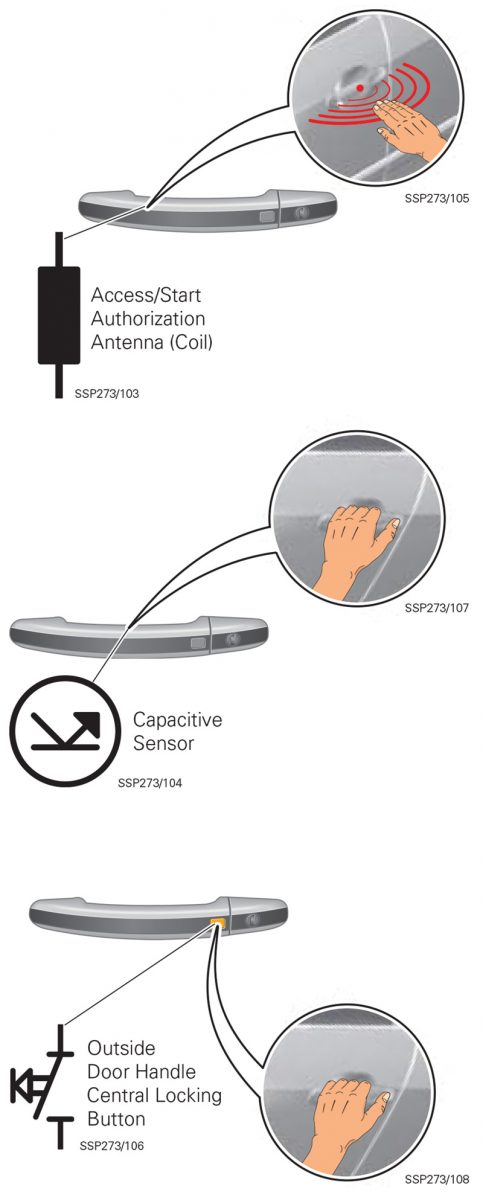
What’s happening with the door locks?
There could be a problem with the door’s lock/unlock linking rod connector. The linkage can sometimes come loose if the doors have been unlocked by inserting a clothes hanger or other device down into the door and hooking into the rod causing it to disconnect. If this appears to be the situation, remove the interior door panel and reconnect or adjust the linkage. The plastic rod retainer may need replacement if it was broken during forced unlocking.
When one door lock is not working, it’s probably due to errors within the door, including the switch for that side, latch, actuator, or loose or unconnected wires. If the lock slowly loses speed unlocking and locking – or stops working intermittently and starts again – the mechanical lock/unlock mechanism is most likely to blame.
If more than one door is inoperative, however, including the passenger door, interior lights and even the ability to start the vehicle without a key by simply pressing the start button, it’s time to investigate the central control module for possible replacement.
Apparent control module malfunctions often really damaged wiring
Before ordering a replacement control module, however, consider that more often than not what appears to be a defective main module or door CCM is really loose, disconnected, or damaged wiring. If the primary control module is inoperative, carefully check the wiring harness connected to the unit for loose, damaged or broken wiring. If any wiring is broken, this must be corrected either by re-soldering the wire back together, or by using a wire-joining clip. Even if not broken, wires that are missing insulation are subject to moisture and shorting, and should be cleaned and thoroughly taped to restore insulation.
With any suspicion of unseen wiring damage, run voltmeter tests on harnesses at the primary CCM and door units to determine whether or not the wiring is good. If not, carefully trace the wiring to find the problem. Vehicles can have bad solder points where the harness connector mounts to the circuit board at the door locking mechanism, and re-soldering those joints can clear malfunction problems.
If thoroughly checking for and either finding no damaged or loose wiring or correcting anything found does not restore the CCM and KESSY to sanity, replace the central module.
Match replacement module and existing module part numbers
The CCM is located under the carpet in the floor near the driver’s door in earlier vehicles, behind the lower dash area behind the glove box in many vehicles from 2009 to 2011, and in later models.
Wherever the CCM is located, it must be re-emphasized that you should check all wiring connected to it for breaks, corrosion, broken insulation, or simply a loose connection. Corrupted wiring will render the CCM useless, and must be thoroughly repaired to put the CCM back into operation, make KESSY work, and ensure that the problem does not reoccur.
The driver’s-side compartment on the floor near the door is prone to taking on water, sometimes soaking the CCM and damaging key wiring. Dry off the CCM if wet, dry the wiring and dry the compartment if damp or containing water. Check to see that the ground wire that comes out of the plastic control housing and fastens to a stud on the floor pan is sound and not corroded. Check the wiring harness and all connections for corrosion and any of the other plugs and wires going to the CCM. If any wires or connections are not sound – frayed, broken, without insulation – this will either totally stop the CCM from controlling the keyless access system or render its operation quite erratic, so it must be repaired.
Strange keyless access behavior from vehicles equipped with a floor mounted CCM is quite often the result of a water-damaged wiring harness connected to the CCM, not the module itself.
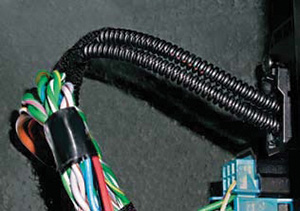
When replacing the central control module, regardless of its location, the new module must match the vehicle VIN – a control module sitting on the shelf can only replace the existing module coming out of the vehicle and operate correctly if they both have exactly the same part number, and a matching module may need to be ordered to install and restore keyless entry. Use a scan tool to get the module part number, or take the existing number from the unit itself – the replacement module and the unit being replaced that matches the vehicle VIN must have exactly the same part number.
Once a replacement central module is installed, program the key fob so it transmits the appropriate signals to the KESSY system, unlocks the door when the driver touches the door handle, and turns on the dome light as the driver enters the car.
The vehicle alarm is part of the KESSY system. If the CCM is not operating properly, it could sound erratically at odd times, such as when the door is opened or when simply driving. If this happens after installing a new CCM and programming the key fob, suspect loose wires or connections still not found somewhere in the lock/unlock wiring system, and this should be corrected before turning the vehicle loose.
Download PDF


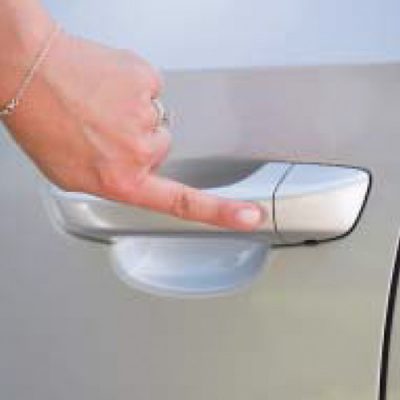
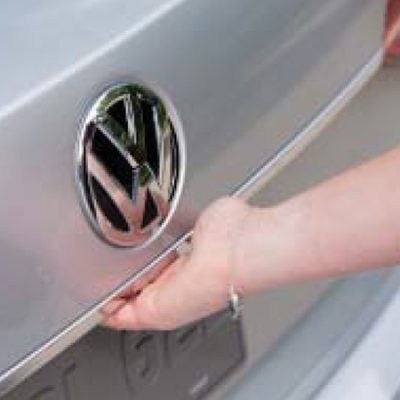
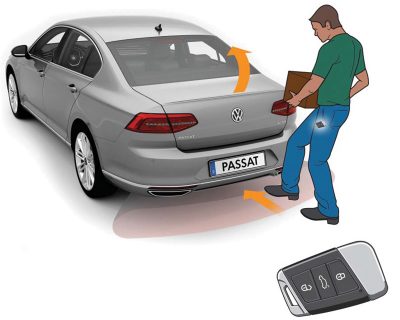
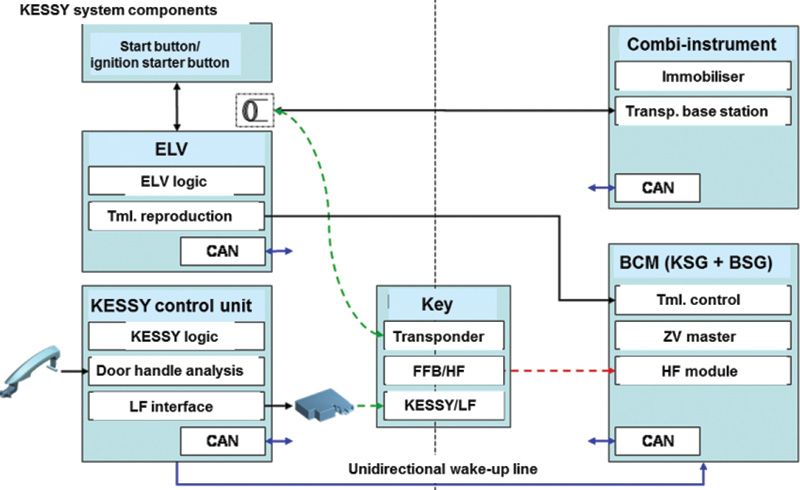
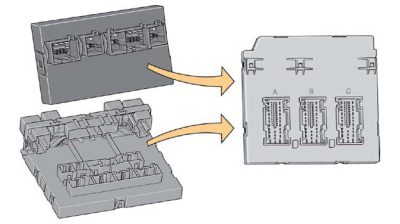






0 Comments